What causes projected laser pattern vibration?
DRILL BIT INDUCED WORKSURFACE LASER PATTERN VIBRATION
Drill bit vibration or “chatter” can occur with any drill bits but is most common with larger diameter drill bits as well as specialty bits with larger cutting diameters. Drill bit vibration typically happens when the drill bit begins cutting or when it vibrates within a drill hole during cutting. In both situations the resulting bit vibration can be translated into the BullseyeBore Core projected patterns. This may appear as rhythmic waves in the laser patterns on the worksurface, and their appearance indicates that there is something wrong in the drilling operation. In this situation, BullseyeBore Core helps you to visualize the problem. When you see these rhythmic waves in the laser patterns, its a good indication that you need to invoke better drill control, use sharper drill bits, modify your feed rate, and/or stabilize the workpiece that you are drilling into (more on this below).
Here is an example of drill bit vibration with a large 0.5” diameter bit that occurred at the start of drilling. This is caused by the combination of a large diameter bit and a poorly stabilized workpiece. In this case the vibration subsides as the hole is formed.
Here is an example of drill bit vibration caused by the combination of a dull spade bit with a poorly stabilized workpiece. Note that the vibration starts when the drill bit hole is formed and increases as the bit vibrates within the hole. Turn on the audio to hear the drill bit “chatter”.
While wood is generally softer and less prone to chatter or vibration when compared to metals, certain conditions or factors can still contribute to the occurrence of drill bit vibration or chatter in wood drilling operations. Some factors that can cause drill chatter or vibration in wood include:
- Dull or improperly sharpened drill bits: Blunt or improperly sharpened drill bits can cause the drill to grab and vibrate, resulting in chatter.
- Excessive feed rate: Applying too much pressure or feeding the drill too quickly into the wood can cause the bit to vibrate and chatter.
- Inadequate tool rigidity: Using a drill with low rigidity or flexibility can lead to increased vibrations and chatter during wood drilling.
- Incorrect drill point geometry: Using drill bits with incorrect point angles or unsuitable geometries for wood drilling can contribute to chatter.
- Poorly stabilized workpiece: If the workpiece is thin or poorly stabilized, the workpiece itself can vibrate and contributed to chatter.
To minimize drill chatter when drilling in wood, you can consider the following steps:
- Use sharp and properly maintained drill bits specifically designed for wood drilling.
- Control the feed rate by applying steady and moderate pressure while drilling.
- Ensure the drill, drilling setup, and workpiece are stable and rigid to minimize vibrations.
- Consider using a center punch or pilot hole to provide a starting point and guide for the drill bit.
- If possible, use drills with specially designed point geometries for wood drilling, such as brad-point or spade bits.
HAMMER DRILL INDUCED WORKSURFACE LASER PATTERN VIBRATION
Worksurface pattern vibration can also occur when BullseyeBore Core is used with common commercial electric hammer drills. Such drills introduce a worksurface hammering motion that is often translated into the BullseyeBore Core projected patterns. This may also appear as rhythmic waves in the laser patterns on the worksurface. This may be somewhat diminished by worksurface stabilization that can dampen the worksurface vibration. In most cases, however, the BullseyeBore Core worksurface patterns with common commercial electric hammer drills are still usable.



